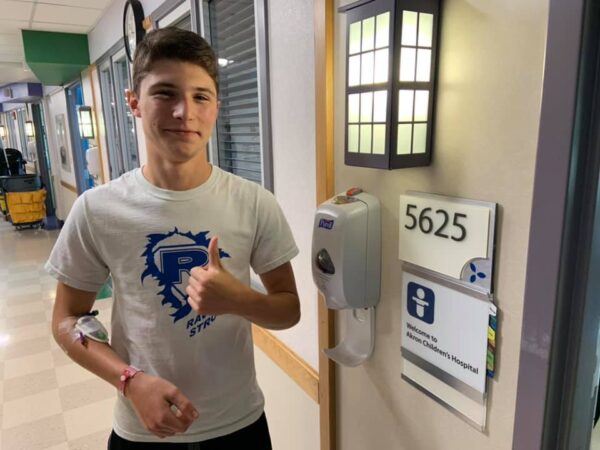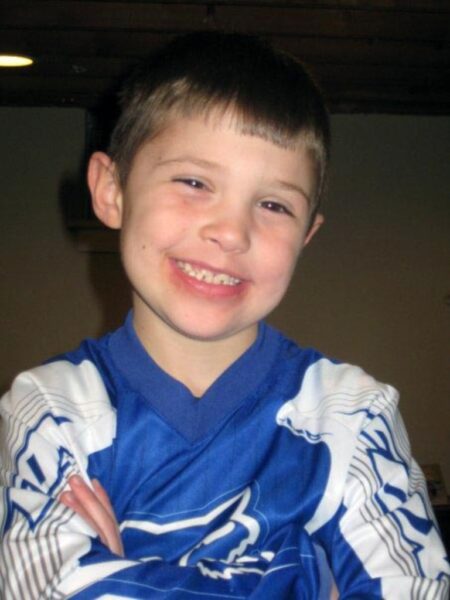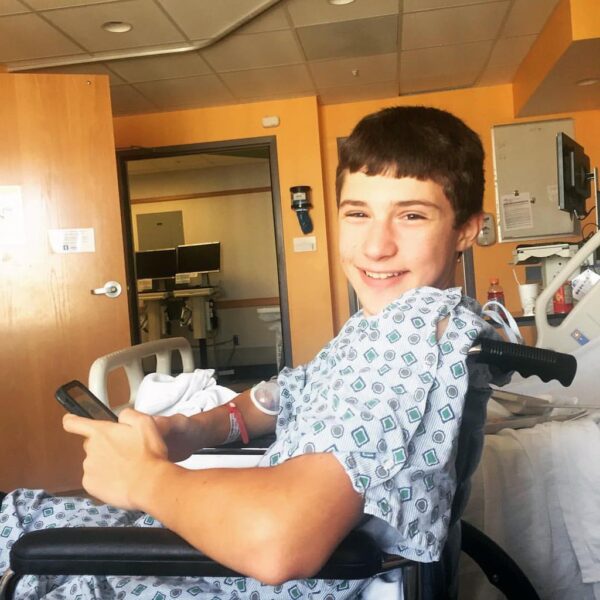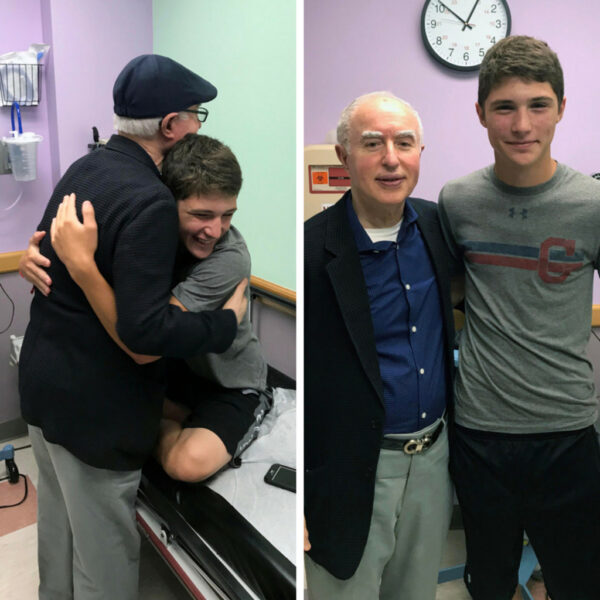
Colton’s last visit at Akron Children’s in 2019 before officially transitioning to adult care for his hemophilia.
From the outside, kids affected by bleeding disorders appear well but, on the inside, these conditions can damage joints or organs and require ongoing medical care. For parents, the other side effect of these conditions is the stress and anxiety they can bring as children learn to navigate their treatment plan independently.
Colton Clites, now 20, was diagnosed as being affected by severe hemophilia at birth so he’s never known life without the condition. At-home infusions and medications were part of his normal routine and, by age 11, his care team at Akron Children’s was taking steps to make sure his transition to adult care felt normal, too.
“At age 11, our team uses a readiness health assessment tool with patients to help us evaluate their understanding of the bleeding disorder affecting them,” said John Fargo, DO, pediatric hematologist-oncologist and director of the Hemostasis and Thrombosis Center at Akron Children’s. “We start the process with the basics like the name of the bleeding disorder, medications they need and then build on this knowledge at each visit until they’re able to manage their treatment and communicate their needs with any medical team or adult they encounter.”

Colton’s mom let him have control over negotiable aspects of his care early on such as getting infusions before or after a show.
As Colton transitioned, he had a lot of the same challenges other kids face when managing chronic disease, especially with the timing of treatment during school and work. His Akron Children’s team adapted his treatment plan as he grew, while also helping Colton become the team leader of the plan.
“We spent a lot of appointments looking at his numbers, his schedule and working on smartphone apps to develop a treatment regimen,” said Dr. Fargo. “We’d follow-up with his larger care team to determine if the plan worked or how we could tweak it to better address his needs. This took a lot of communication and leadership on Colton’s part as he learned to take responsibility for his care plan.”
The unique thing in Colton’s case was he had experienced a life-threatening brain bleed when he was younger so his plan couldn’t focus solely on preventing joint or muscle bleeds. The treatment plan, including his ability to administer his intravenous medication, needed to prevent another life-threatening event.

As Colton got older, he learned more about his condition, how to advocate for himself and navigate his own health care needs.
Colton’s mom, Randi, says transitioning through life stages was a learning process for her, too.
“Caring for Colton was always part of my routine. I had to let go and let him learn and participate in his care along the way so he was ready for the next step, even if I wasn’t,” said Randi. “Treating a young adult man with a chronic illness takes a very special doctor and Dr. Fargo and his team have met the challenge in every way.”
The Hemostasis and Thrombosis Center’s transition program begins when patients are young to give the care team of nurses, nurse practitioners, social worker, physical therapists, psychologist and hematologist ample time to provide tools and education to patients. They also address psycho-social and other barriers to medical independence like insurance and prescriptions, prior to transition.

Retired pediatric hematologist-oncologist Dr. Mohammad Talaizadeh (Dr. Talai for short) with Colton during a visit. One of Colton’s first words was “Doc” since he saw Dr. Talai so often.
“Trusting your child to take over their care for a life-threatening disorder is a challenge for a parent and I mean that in the best and hardest way,” said Randi. “It’s been a process for both of us and he’s learned – sometimes the hard way – how to manage his condition on his own and I’m really proud of him.”
If your child bleeds more often than his peers, contact the Hemostasis and Thrombosis Center at Akron Children’s for an appointment. To support the bleeding disorders community, raise awareness at events like the Unite Walk for bleeding disorders or donate blood since these disorders often require transfusions.










